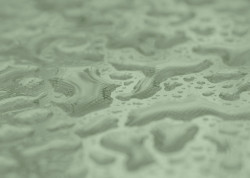Why is Dehumidification Important to Treat Mold
Do you believe that keeping your house or office clean is a sufficient defense against mold? The truth is that your housekeeping habits really have no impact. When it comes to mold infestation, the real enemy is water, not dirt.
Mold spores travel through the air unseen by the naked eye. You come into contact with them nearly every day, and no amount of cleaning can remove them from your surroundings. Most of the time they have no effect until they come into contact with moisture, which is the essential ingredient for mold growth. Once a spore lands on a damp spot, it has everything it needs to begin multiplying freely.
This is why humid areas like bathrooms and basements are fertile areas for an infestation. An effective mold removal program requires dehumidification to eliminate problem areas and prevent future occurrences. Air conditioners and dehumidifiers remove moisture from the air, keeping the condensation process from creating damp surfaces.
It’s not just the moisture in the air that you need to be concerned about. Check regularly for plumbing and roof leaks so they can be repaired as soon as possible.
Our proprietary MoldExterm mold removal system includes installation of a professional-grade dehumidifier that controls atmospheric moisture even in hard-to-reach areas. Visit our website to learn more about why the MoldExterm process is superior to outdated remediation methods.

